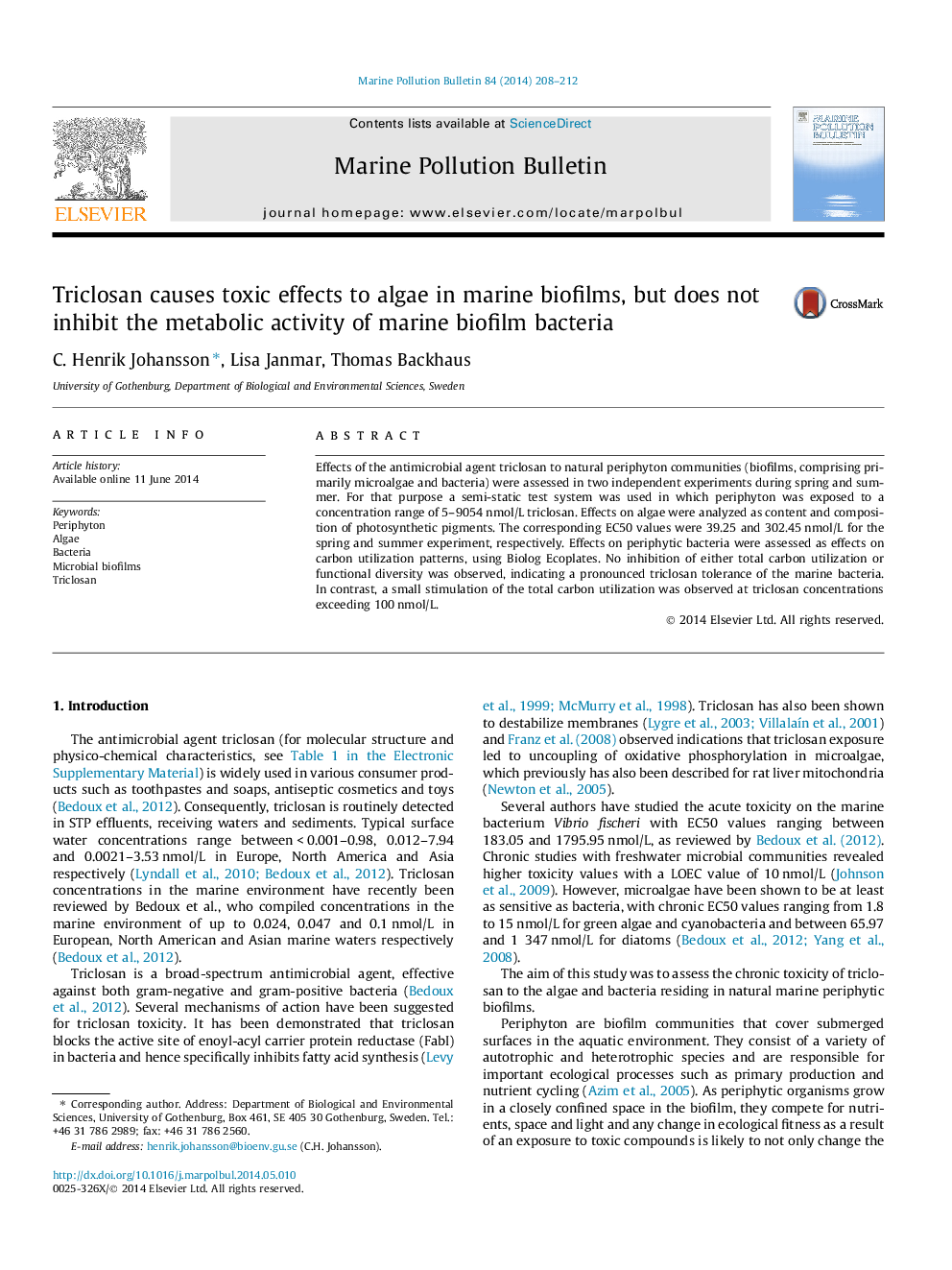| کد مقاله | کد نشریه | سال انتشار | مقاله انگلیسی | نسخه تمام متن |
|---|---|---|---|---|
| 6358688 | 1622743 | 2014 | 5 صفحه PDF | دانلود رایگان |
- The toxicity of triclosan was studied on natural marine periphyton communities.
- Triclosan is toxic to algae but not to bacteria.
- The toxicity toward algae was described as pigment content and composition.
- No inhibition of carbon source utilization was observed for marine bacteria.
Effects of the antimicrobial agent triclosan to natural periphyton communities (biofilms, comprising primarily microalgae and bacteria) were assessed in two independent experiments during spring and summer. For that purpose a semi-static test system was used in which periphyton was exposed to a concentration range of 5-9054Â nmol/L triclosan. Effects on algae were analyzed as content and composition of photosynthetic pigments. The corresponding EC50 values were 39.25 and 302.45Â nmol/L for the spring and summer experiment, respectively. Effects on periphytic bacteria were assessed as effects on carbon utilization patterns, using Biolog Ecoplates. No inhibition of either total carbon utilization or functional diversity was observed, indicating a pronounced triclosan tolerance of the marine bacteria. In contrast, a small stimulation of the total carbon utilization was observed at triclosan concentrations exceeding 100Â nmol/L.
Journal: Marine Pollution Bulletin - Volume 84, Issues 1â2, 15 July 2014, Pages 208-212
